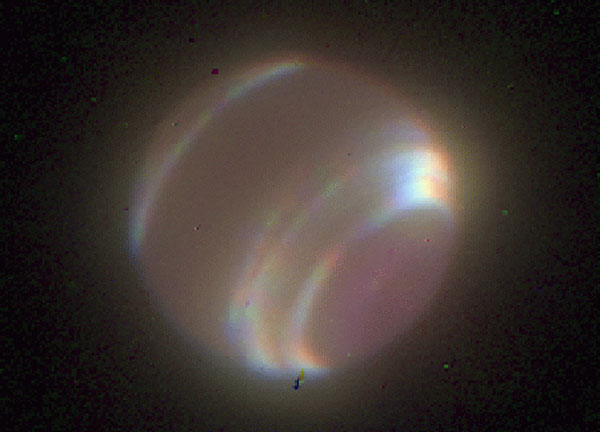Explanation: From the Earth's surface, Neptune usually appears as a fuzzy blotch. The blurring effects of the Earth's atmosphere deny clearer images. By distorting mirrors in the telescope itself in time with the changing atmosphere, however, these effects can be greatly reduced. Many of the world's largest telescopes are now implementing these "rubber mirror" adaptive optics (AO) systems to bring out the finest details that these telescopes can resolve. Recently the 10-meter Keck II telescope in Hawaii came on-line with AO capability. The above image of Neptune in three infrared colors demonstrates the clarity of the new technique - as compared to an image of Neptune from Keck II without AO.
1999 2000 2001 2002 2003 2004 2005 2006 2007 2008 2009 2010 2011 2012 2013 2014 2015 2016 2017 2018 2019 2020 2021 2022 2023 2024 2025 |
Yanvar' Fevral' Mart Aprel' Mai Iyun' Iyul' Avgust Sentyabr' Oktyabr' Noyabr' Dekabr' |
NASA Web Site Statements, Warnings, and Disclaimers
NASA Official: Jay Norris. Specific rights apply.
A service of: LHEA at NASA / GSFC
& Michigan Tech. U.
|
Publikacii s klyuchevymi slovami:
Neptune - adaptive optics - adaptivnaya optika - Neptun
Publikacii so slovami: Neptune - adaptive optics - adaptivnaya optika - Neptun | |
Sm. takzhe:
Vse publikacii na tu zhe temu >> | |
